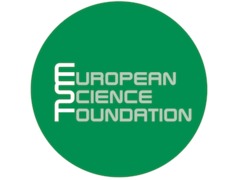Physical and Engineering Sciences
Identity Statement
Mathevon, Valerie; Meyer, Ruth Ingeborg
Content and Structure
The European Science Foundation (ESF) Standing Committee Physical and Engineering Sciences (PEN, formerly PESC) came into existence in March 1995, following the ESF strategic reappraisal. Together with the Life and Environmental Sciences Committee (LESC) the PEN succeeded the former European Sciences Research Councils (ESRC).
The PEN is composed of more than 35 leading scientists nominated by the Foundation’s Member Organisations, and its work area covers various scientific topics (physics, chemistry, materials, mathematics, informatics and computer sciences, engineering).
ESF associated Committees (Committee on Radio Astronomy Frequencies (CRAF), European Space Science Committee (ESSC), Nuclear Physics European Collaboration Committee (NuPECC) also work in the field of physical and engineering sciences. These associated committees are not directed by PEN but report their work to PEN.
PEN maintains also close working relationships with organisations, such as the Chairs of European Research Council Chemistry Committees (CERC3), the European Union of Physical Research Organisations (EUPRO), and the European Cooperation in Science and Technology (COST).
Conditions of Access and Use
Allied Materials
Notes
AE – Academia Europaea
AllChemE – Aliance for Chemical Sciences and Technologies in Europe
ALLEA – All European Academies
CCI – Comité Cientifico Internacional / International Scientific Committee
CCMS – Committee on the Challenges of Modern Society
CENELEC – European Committee for Electrotechnical Standardization
CERC3 – European Research Councils Chemistry Committees
COST – European Cooperation in Science and Technology
CRAF – Committee on Radio Astronomy Frequencies
DESY – Deutsches Elektronen-synchrotron
EARMA – European Association of Research Managers and Administrators
ECFA – European Committee for Future Accelerators
ELFE – Electron Laboratory for Europe
ENSA – European Newton Scattering Association
ESA – European Space Agency
ESRC – European Science Research Council
ESF – European Science Foundation
ESO – European Southern Observatory
EUPRO – European Union of Physics Research Organisations
ESNS – European Spallation Neutron Source
ESS – European Spallation Source
ESTA – European Science and Technology Assembly
FOM – Fundamenteel Onderzoek der Materie
GDCh – Gesellschaft Deutsher Chemiker
HPN – Hadronic Physics Network
IAC – Instituto de Astrofisica de Canarias VLBI – Very Long Baseline Interferometry
ICSU – International Council of Scientific Unions
IHES – Institut des Hautes Études Scientifiques
IUCAF – InterUnion-Commission on the Allocation of Frequencies
ITU – International Telecommunications Unit
JOSO – Joint Organisation for Solar Observations
JNICT – Junta Nacional de Investigaҫao Científica e Tecnológia
NanoSTAG – COST Nanoscience and Nanotechnology Advisory Group
NAS – National Academy of Sciences
NASA – National Aeronautics and Space Administration
NSF – National Science Foundation (of the US)
NuPECC – Nuclear Physics European Collaboration Committee
OECD - Organisation for Economic Co-operation and Development
SAC - European Research Council's Scientific Advisory Committee
SERC – Science and Engineering Research Council
SSC – Space Science Committee
USSR – Union of Soviet Socialist Republics
VLBI – Very Long Base Interferometer
WARC – World Administrative Radio Conference
